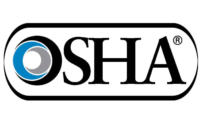NTSB closes 8 safety recommendations
"Much more work remains to be done"

The National Transportation Safety Board (NTSB) this week published an updated list of the safety recommendations associated with the agency’s 2019 – 2020 Most Wanted List of Transportation Safety Improvements following the recent closure of eight safety recommendations.
Of the eight closed safety recommendations; four (P-17-003, H-15-020, A-09-092, and H-09-018) were closed with acceptable action taken, one (P-18-003 ) was closed with acceptable alternate action taken, one (M-16-028) was closed with a status of exceeds recommended action, and safety recommendation H-12-029 was unfortunately closed with unacceptable action taken.
Safety recommendation (R-04-007) was closed because it was superseded by a subsequently issued safety recommendation (R-19-001) which remains open.
The NTSB announced the 2019 – 2020 Most Wanted List of Transportation Safety Improvements Feb. 4, 2019, in which the agency detailed 267 open safety recommendations that if implemented, can help prevent accidents, and the injuries and fatalities caused by those accidents. The agency went a step further and created what it calls the “Focused 46” – a list of 46 safety recommendations taken from the 267 addressed by the Most Wanted List – that the agency believes can and should be implemented during the two-year Most Wanted List cycle. Safety recommendation R-04-007 was one of “the focused 46.”
“Closing safety recommendations with acceptable action taken, resulting in improved transportation safety, is the goal of issuing and advocating for a safety recommendation,” said Robert Sumwalt, Chairman of the National Transportation Safety Board. “Our safety recommendations are founded in the science of our accident investigations and are designed to prevent similar future accidents. Transportation safety is improved when recipients of our safety recommendations take acceptable action. While I’m pleased to highlight this success, I also have to highlight how much more work remains to be done, and, the lost opportunity to improve transportation safety with the unacceptable action taken on safety recommendation H-12-029,” said Sumwalt.
The five recommendations closed with acceptable or acceptable alternate action addressed pipeline, highway and aviation safety issues. Safety recommendation P-17-003 to the Colonial Pipeline Company called for actions to address pipeline dent repairs and leak detection. Safety recommendation P-18-003 to Honeywell called for actions to address an issue with incorrect installation of mechanical tapping tee assemblies. Safety recommendation H-15-020 to the National Limousine Association addressed the need for passenger safety briefings regarding seat belt use in limousines and H-09-018, issued to the Federal Motor Carrier Safety Administration addressed the NTSB’s need, in the exercise of its statutory authority, to access all positive drug and alcohol test results and refusal determinations conducted under DOT testing requirements. Safety recommendation A-09-092, issued to the FAA, addressed the need for the helicopter emergency medical services to use the Aviation Digital Data Service Weather Tool as an official weather product. Safety recommendation M-16-028, issued to the Passenger Vessel Association, called for notification to the operators of amphibious passenger vehicles of the importance of the lessons learned from two amphibious passenger vehicle crashes, completion of proper maintenance and service, use of pre-trip safety orientation for passengers regarding seat belt use, reducing driver distraction by having a tour guide conduct tours, complying with U.S. Coast Guard guidance and managing the risk of operating amphibious passenger vehicles.
Safety recommendation H-12-029, issued to the Federal Motor Carrier Safety Administration, sought the establishment of an ongoing program to monitor, evaluate, report on and continuously improve fatigue management programs implemented by motor carriers to identify, mitigate and continuously reduce fatigue-related risks for drivers.
The NTSB’s Most Wanted List of Transportation Safety Improvements, now in its 30th year, identifies safety improvements that can be made across all modes of transportation to prevent accidents, minimize injuries and save lives.
Since the NTSB’s inception more than 52 years ago, the agency has issued more than 14,900 safety recommendations, and on average, more than 80 percent of them are favorably acted upon. At any given moment, the NTSB’s Safety Recommendations Division is managing the correspondence regarding an average of 1,200 open safety recommendations.
Looking for a reprint of this article?
From high-res PDFs to custom plaques, order your copy today!






.jpg?t=1721257160)

